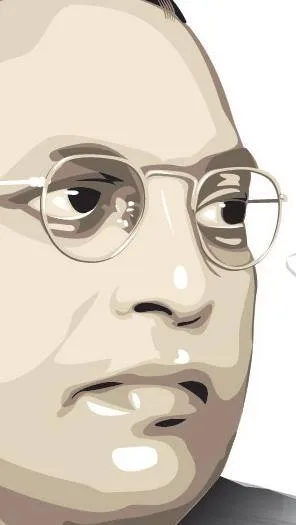Tejas Harad
 We are a caste society. Everybody has a caste here. Castes are classified in four varnas: Brahmin, Kshatriya, Vaishya and Shudra (in descending order of hierarchy), but there is a fifth category too. If a person’s caste doesn’t come under in any of the four varnas, they are literally an outcaste (Avarna, as opposed to Savarna).
We are a caste society. Everybody has a caste here. Castes are classified in four varnas: Brahmin, Kshatriya, Vaishya and Shudra (in descending order of hierarchy), but there is a fifth category too. If a person’s caste doesn’t come under in any of the four varnas, they are literally an outcaste (Avarna, as opposed to Savarna).
In villages everybody knows everybody else. Therefore everybody knows everybody’s caste too. Besides their surname, a person’s caste can be discerned by the area (basti/pada) of the village the person stays in, as people of the same caste tend to congregate in the same area. But matters get complicated in cities, as cities afford greater anonymity to the residents. As most people migrate to cities from different villages and not all of them at the same time, it is not easy to know a person’s “roots”. Since cities have bigger populations and tend to be densely populated, different communities might happen to stay in the same locality, so location in the city is not a very good indicator for finding out one’s caste. At such times, people — who just have this itch to know a person’s caste but are too polite to ask — use surnames as a proxy.
A person’s caste identity is inherent in their surnames (most times, but not always). The corollary of this is that a person’s caste can be discerned by looking at their surnames. This is more true for Brahmins than others.
By various estimates Brahmin population in India ranges between 3% and 5%. But even though a minority, they are the most visible group in the country as they occupy most positions of power, be it in the government, judiciary, media or academia. If you are a Deshpande or a Kulkarni or a Patwardhan, you will be easily recognised as a Brahmin by everybody. And people will also look at you with a certain amount of respect, implicit or explicit. Brahmin surname is a marker of privilege, status and authority. Brahmins are supposedly more cultured, more learned and economically well off. And therefore non-Brahmins tend to perceive them with deference.
Therefore, Meena Kandasamy has repeatedly urged Brahmins and other upper castes to drop their surnames.
“A savarna surname is a conversation that stops before it can even start. Drop it. It doesn’t take time, effort, money. At least show us the commitment that you want us to be your equals.”1
“I think perhaps the non-Brahmins, the Bahujans and Dalits should start taking offence. BIG TIME. Every time we see the sacred thread (peeping out from under the shirt), every time we see twice-born surnames, every time we see the naaman and other religious marks that signify caste superiority because it precisely tells (and SHOWS us) that we are inferior, we are low, we are not of the exclusive coterie, we are damned.”2
The story of lower caste & tribal (Dalit Bahujan Adivasi) surnames is not as straightforward. Since as a group they are large in size, there is that much variety in their surnames. Also, since they rarely occupy positions of power, their surnames are not prominently flashed on TV channels and in newspapers. It is not easy to discern a lower caste person’s caste by looking at their surname. (I challenge anyone to tell me my caste by looking only at my surname.) Sometimes some surnames are found in multiple caste communities. Bhoir and Jadhav, for example, are surnames that are found among SCs, STs and OBCs.
There is a section of Savarnas who advise that lower castes should change/drop their surnames to escape discrimination. I find this absurd. There are many examples of families, especially in Dalit communities, who have given up their generational surnames. But this practice should remain only in the domain of personal choice. For a Dalit, dropping her surname is no guarantee that she will be treated as an equal by others. Casteist Savarna Hindus, and there are many of them, go to great lengths to find out a person’s caste so that they can accurately place them in the caste hierarchy. It gives them great satisfaction to see where they stand in caste location vis-a-vis the person they are interacting with. Surname is just one of the many tools in their hands.
Dropping surnames is a notional gesture. It doesn’t help us in any way to eradicate material differences that exist between Savarnas and Dalits Bahujan Adivasis. The ritual hierarchy will not disappear until material differences, which are so stark even today, disappear too.
Having said that, the funny thing is, it is easier for Dalits Bahujan Adivasis to drop their surnames than Brahmins. We do not have the kind of “glorious generational past” that Brahmins possess. Brahmin surnames have Wikipedia pages.3 Their histories have been recorded and canonised. Hence, they will be more reluctant to give up their surnames — which have so much caste capital infused in them — than anyone else.
A Brahmin friend recently told me that at one point she was thinking of becoming a teacher. If she had gone ahead with that decision, she said, she would have been the fourth generation teacher in her family. As she was narrating this tale I thought about myself, a first generation learner, and sighed loudly.
~
Notes
1. Meena Kandasamy, Facebook, Feb 25, 2016, https://www.facebook.com/meena.kandasamy/posts/10154026842002009
2. Meena Kandasamy, Facebook, April 14, 2014, https://www.facebook.com/meena.kandasamy/posts/10152441559812009
3. For example, see https://en.wikipedia.org/wiki/Deshpande, https://en.wikipedia.org/wiki/Kulkarni, and https://en.wikipedia.org/wiki/Patwardhan
~~~
Tejas Harad works in the copy editing department at Economic and Political Weekly. His interest lies in studying the intersection of Ambedkarism, feminism and theoretical Marxism.









